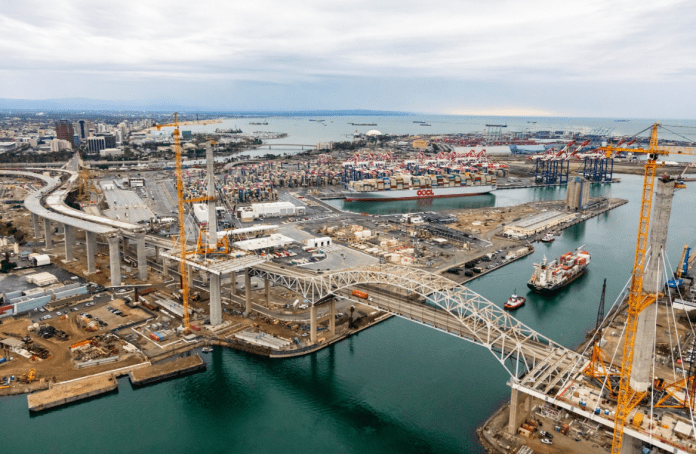California Governor Gavin Newsom and the US Department of Transportation (USDOT) decided to start a strategic partnership to help facilitate innovative projects and financing opportunities for multi-billion infrastructure improvements in California.
The agreement is expected to facilitate the movement of imports and exports in California and bring supply chain processes into the 21st century to create resilience throughout the critical trade corridors of California and the US, including around San Pedro Bay and the Inland Empire.
“This innovative federal-state partnership will help us fast-track those projects that will make our ports and infrastructure even more efficient,” said Governor Newsom. “This partnership will help us jumpstart and support multiple infrastructure projects to improve our supply chain, making sure goods get to where they need to go faster, cheaper, and in a more environmentally-friendly manner.”
This partnership can help kick-start construction to deliver benefits to the transportation supply chain and U.S. consumers in the future. Projects that could receive support through this agreement include:
- Port-specific upgrades;
- Expanding capacity for freight rail;
- Developing inland port facilities for increased warehouse storage;
- Railyard and truck electrification;
- Highway upgrades to improve truck travel times;
- Grade-separated crossings to reduce the number of rail-street intersections and improve safety and efficiency;
- Land ports of entry to expand trade capacity and cross-border commerce;
- Other eligible projects of critical importance identified by the California State Transportation Agency (CalSTA).
Under the Emerging Projects Agreement, the Build America Bureau at USDOT will support CalSTA in developing California infrastructure projects designed to improve the capacity and resiliency of the goods movement chain and will assist project sponsors in exploring innovative financing opportunities for billions in infrastructure investment, in part through the USDOT credit assistance programs Transportation Infrastructure Finance and Innovation Act (TIFIA) and Railroad Rehabilitation and Improvement Financing (RRIF).
“Our supply chains are being put to the test, with unprecedented consumer demand and pandemic-driven disruptions combining with the results of decades-long underinvestment in our infrastructure,” said US Transportation Secretary Pete Buttigieg.
This agreement for longer-term solutions comes after several efforts by California Governor and Biden-Harris Administration for immediate action against the California congestion crisis. To address current supply chain bottlenecks and delays, Governor Newsome issued an executive order last week that directs state agencies to help identify additional ways to alleviate congestion at California ports, while earlier in October, Biden administration suggested terminals operate 24/7. After Governor’s executive order, the City of Long Beach announced the temporary withdraw of limitations on the number and/or height of shipping container storage allowed at the Port of Long Beach (POLB).
“The Covid-19 pandemic put a spotlight on California’s ports and the importance of our state’s infrastructure in moving goods throughout the US and around the world,” CalSTA Secretary David S. Kim said. “The agreement will go a long way toward quickly upgrading infrastructure to support a more efficient and resilient supply chain that will flex California’s power in global trade.”
Both ports of Long Beach and Los Angeles have welcomed the agreement. “Having our federal and state transportation agencies working in unison to help fund infrastructure is exactly what we need,” said Port of Los Angeles Executive Director Gene Seroka. “We have projects in need of funding that will reduce cargo delays, improve efficiency, reduce emissions and improve safety for waterfront workers and motorists throughout the region.”
Furthermore, Port of Long Beach Executive Director Mario Cordero believes that this federal-state partnership will ensure the creation of local infrastructure projects aimed at improving freight movement between the San Pedro Bay ports complex and distribution centers in the Inland Empire. “This plan builds on our ongoing efforts to identify immediate and long-term solutions that will expedite cargo shipments and address an historic cargo surge and forecasted cargo growth,” he noted.
Both the State of California and USDOT have made clear that infrastructure projects must be considered based on their potential for strengthening supply chain resilience and in a manner that addresses equity and environmental justice. California’s recently enacted budget includes US$250 million for ports, US$280 million for infrastructure projects at and around the Port of Oakland, and US$1.3 billion over three years for zero-emission trucks, transit buses and school buses, including the deployment of more than 1,000 zero-emission port drayage trucks.







